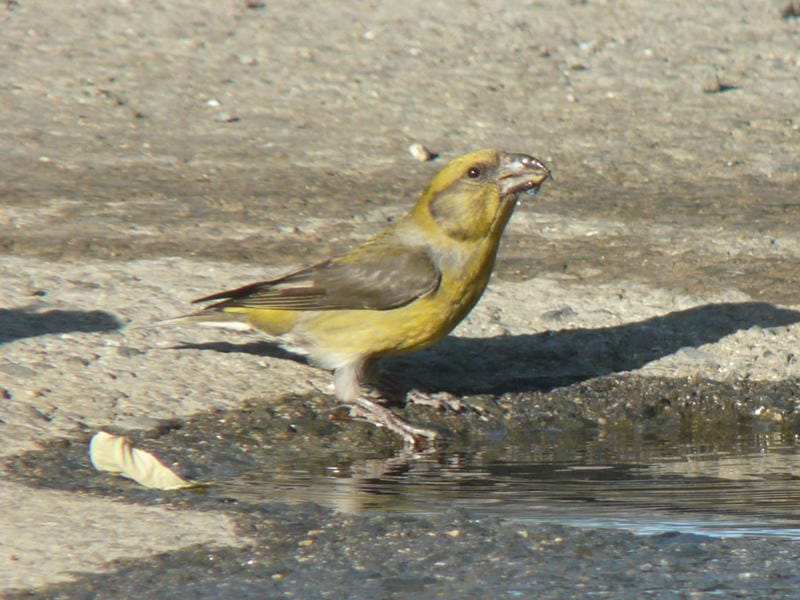The most recent BirdLife Cyprus newsletter had a feature article that was just too good to pass up comment and elaboration on: Our avian forest gems… (English names emphasized by me)
Cyprus, although only 16% of its land mass is covered with forest, hosts more than 34 species of forest birds, 15 all-year residents, eight migratory breeders and 11 winter visitors. All our six endemics have exclusive or partial populations living in forest habitats – exclusive being the Cyprus Jay Garrulus glandarius glazneri, Cyprus Coal Tit Periparus ater cypriotes, Cyprus Short-toed Treecreeper Certhia brachydactyla dorotheae and Cyprus Scops Owl Otus scops cyprius. (the first three found only in the Troodos and Paphos forests).
… leaving the remainder of the birds on the Cyprus Species List (over 380 species) are either migrants or accidentals. That’s quite a lot!
But it’s really not much of a surprise that the majority of the endemic species are arboreal birds – Cyprus is relatively close to the mainland, being only about 90 km away, and as a consequence the sea crossing is not much of an obstacle. If there is to be geographical or ecological isolation of a population, with which to generate population divergence, then it will be more likely to come by other means.
… which is exactly what we see. All of the endemic subspecies are isolated not merely to the island geographically, but to the forests as well – ecologically. This second barrier may be what keeps these apparently recently divergent populations from mixing back into the nominative subspecies’ populations.
Paradoxically though, the endemic species (Cyprus Wheatear and Cyprus Warbler) are not year-round residents limited to the forests, but migratory – partially in the case of the warbler, suggesting that they reached a greater degree of divergence from sister species despite only having the geographical isolation. As it happens though, Blackcaps may provide a modern example of how this can occur.

CAPTION: Crossbill in Troodos, taken November 29, 2010 – ©Jane Stylianou
Of our five resident finches, four have the majority of their population in our forests, the commonest being the Chaffinch Fringilla coelebs and the rarest with the smallest breeding distribution, the food specialist Red Crossbill Loxia curvirostra guillemardi, being exclusively dependent on Black Pine Pinus nigra cones. The Spotted Flycatcher Muscicapa striata and Woodlark Lullula arborea are quite plentiful in the southern mountain range along with the Northern Goshawk Accipiter gentiles. The Eurasian Blackbird Turdus merula having colonized the southern forests (Troodos and Paphos forests) since 1976 it is still increasing its range and population spreading even to the lower reaches of the forest.
Of our migrant breeders the Hoopoe Upupa epops along with the Turtle Dove Streptopelia turtur, European Nightjar Caprimulgus europaeus, Olivaceous Warbler Hippolais pallida, Masked Shrike Lanius nubicus and Cretzschmar’s Bunting Emberiza caesia fill our forests with their melodious chorus during spring and summer.
Winter visitors frequenting our forests range from the vociferous Fieldfare Turdus pilaris and Redwing Turdus iliacus to the rarer Goldcrest Regulus regulus, Eurasian Siskin Carduelis spinus, Hawfinch Coccothraustes coccoythraustes and Brambling Fringilla montifringilla, all being visitors from the north.
That’s just plain interesting. As is the rest:
Although most of the forest ecosystems are government forest land and protected, they are still threatened, through fragmentation, disturbance, road building, poaching and forest fires. The conservation therefore of these forest ecosystems, through the implementation of proper management plans, is of paramount importance and will ensure the protection of the forest’s birds and biodiversity in general.
Well no kidding!
Thankfully the Paphos forest is quite a large Special Protection Area (SPA), Important Community Site of NATURA 2000, National Park (12,000ha), Nature Protection Area (5,000ha) and Permanent Forest Area according to forest law. And there are efforts underway to prepare an integrated management plan for the forest.











Leave a Comment